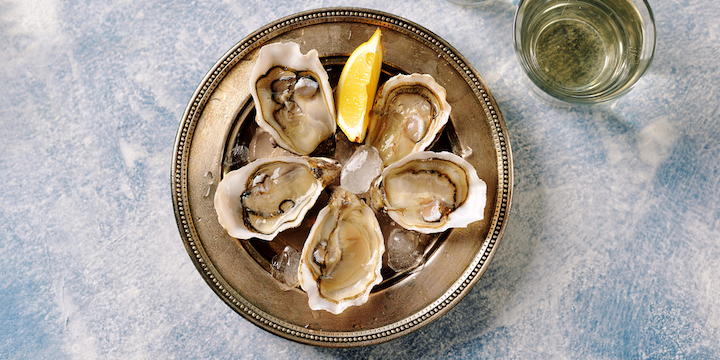Oysters, shrimps, salmon… At Christmas, seafood is popular on our holiday tables. But beware: British researchers at Hull University say seafood and fish contain worrying levels of microplastics. These tiny plastic particles from our waste end up in freshwater and oceans, where they are ingested by the organisms that live there.
According to the study they publish in the journal Environmental Health Perspectives, the most contaminated by these pollutants would be oysters, mussels and scallops.
To read also: Trout and smoked salmon: which to choose for Christmas?
Molluscs and crustaceans, the most contaminated
To arrive at this finding, the researchers analyzed the results of 50 studies published between 2014 and 2020. They then compared the levels of microplastics found in fish and seafood.
Result: molluscs (mussels, oysters, scallops, etc.) come out on top with contamination rates varying between 0 and 10.5 microplastics per gram. Next come crustaceans (crabs, shrimps, etc.) with contents ranging from 0.1 to 8.6 microplastics per gram, followed by fish, which contained 0 to 2.9 microplastics per gram.
Globally, shellfish collected off the coast of Asia were the most contaminated, which suggests that these regions are more heavily polluted by plastic, say the authors of the study.
Toxicity for the consumer?
But what is the risk in consuming these contaminated products? Scientists do not yet fully understand the impact of microplastics on the human body. But the first studies to appear on the subject suggest a risk of toxicity.
The health risk would arise mainly when these microplastics accumulate in our body, as we repeatedly consume contaminated food.
And to understand the effects of these plastic pollutants on our health, we must “first to fully establish the levels of microplastics that humans ingest “ explains in a press release Hull University Evangelos Danopoulos, environmental health specialist and co-author of the study.
A long step that requires evaluating the amount of seafood and fish consumed and measuring the amount of microplastics in these animals.
 Cherry tomatoes contaminated with salmonella: 92 sick and 1 dead
Cherry tomatoes contaminated with salmonella: 92 sick and 1 dead  A better coaching method can make a person grow
A better coaching method can make a person grow  What is the method to prevent diabetes in children?
What is the method to prevent diabetes in children?  What are the effective factors in causing stomach ulcers?
What are the effective factors in causing stomach ulcers?  Why do embarrassing memories seem to appear at night?
Why do embarrassing memories seem to appear at night?  The amazing link between SARS-CoV-2 infection and newly started diabetes
The amazing link between SARS-CoV-2 infection and newly started diabetes  WHO says monkey pox is not a global emergency right now
WHO says monkey pox is not a global emergency right now  Single cell RNA sequencing uncovers new mechanisms of heart disease
Single cell RNA sequencing uncovers new mechanisms of heart disease  Hepatitis of unknown origin: 3 new deaths and 228 cases worldwide
Hepatitis of unknown origin: 3 new deaths and 228 cases worldwide 